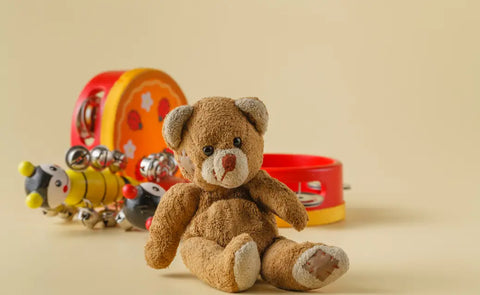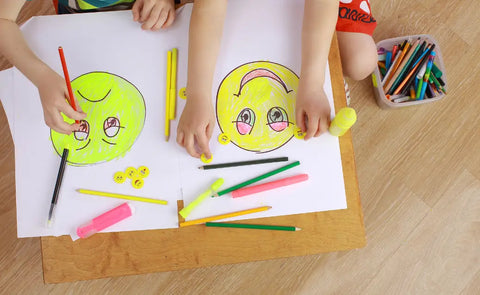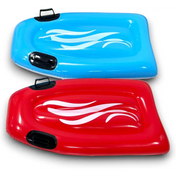Emotional intelligence, often called EQ, is the ability to understand and manage our own emotions while also recognizing and influencing the feelings of others. This skill is crucial in childhood development because it helps kids navigate their feelings, build strong relationships, and handle challenges in life.
One fun and effective way to teach children about emotional intelligence is through toys. Special toys can help kids learn how to express their emotions, show empathy, and become more self-aware in a playful manner.
In this list, we will highlight various toys designed to improve children’s emotional intelligence through play. These toys not only provide entertainment but also valuable lessons that can shape their emotional development for years to come.
1. Role-Playing Toys

Role-playing toys, such as dolls, hand puppets, and action figures, give children a chance to act out different emotions and scenarios. By pretending to be someone else, kids can explore various feelings and situations, helping them understand emotions better.
These toys are essential for teaching empathy, as children learn to put themselves in other people's shoes. For example, when they play with dolls or hand puppets, they can practice communication skills and express how different characters might feel in various situations. This helps kids understand other people's perspectives and encourages them to be more compassionate.
Some great examples of role-playing toys include dollhouses, where children can create stories and interact with miniature characters; hand puppet sets, which allow them to put on shows and express emotions through their puppet characters; and pretend-play doctor kits, where kids can learn about caring for others while practicing empathy and kindness. Overall, role-playing toys are an engaging way for children to develop important emotional skills while having fun.
2. Emotion-Themed Board Games

Emotion-themed board games, like "The Mood Game," are designed to help children recognize and express their feelings. These games often involve activities that encourage kids to identify different emotions, which is essential for developing emotional intelligence. By playing these games, children learn not only to understand their feelings but also to communicate them effectively.
These board games also promote teamwork and emotional problem-solving. As kids play together, they learn to work with others, share their thoughts, and support one another in navigating various emotional situations. This teamwork helps them build stronger relationships and enhances their communication skills.
Some excellent examples of emotion-themed board games include "The Talking, Feeling, Doing Game," which helps kids express their emotions through fun activities, and "Feelings in a Flash," where players quickly identify emotions based on different scenarios. These games make learning about feelings enjoyable, allowing children to develop vital emotional skills while having a great time with family and friends.
3. Interactive Plush Toys

Interactive plush toys are more than just cuddly friends; they can also help younger children recognize and manage their emotions. These toys often respond to children's feelings by changing their facial expressions or reacting to touch. For example, when a child hugs or talks to these plush toys, they may smile, frown, or even make sounds that reflect the child's emotions. This interaction helps kids learn to identify their feelings and understand how to express them.
These toys also provide comfort and self-soothing for children. When kids feel upset or anxious, hugging an interactive plush toy can be calming. The toy's responsive features can help children feel understood and less alone, allowing them to process their emotions more effectively.
Some great examples of interactive plush toys include "Teddy Feelings," which changes expressions based on how the child interacts with it, and "Joy For All Companion Pets," which provides companionship and emotional support. These toys not only encourage emotional awareness but also offer a sense of security and comfort during tough times.
4. Storytelling Kits

Storytelling kits and toys are fantastic tools that encourage children to create and share their own stories. By using these kits, kids can develop their emotional expression and creativity as they build different narratives. Whether they're inventing characters, crafting plots, or creating dialogues, storytelling allows children to explore their feelings and the feelings of others in a safe way.
These kits also help kids process complex emotions. When children tell stories that include challenges or conflicts, they can express feelings they might find difficult to talk about directly. This practice helps them understand their emotions better and learn how to cope with different situations.
Some great examples of storytelling kits include Story Cubes, which are dice covered in images that inspire kids to create unique tales, and emotion-based flashcards, which feature various emotions and scenarios. These tools not only spark creativity but also guide children in expressing their feelings and understanding the feelings of others.
5. Cooperative Games

Cooperative games are a wonderful way for children to learn about working together. In these games, everyone plays as a team to reach a common goal instead of competing against each other. This setup encourages empathy, and teamwork, and helps kids understand different viewpoints.
By playing cooperative games, children learn to communicate and support each other, fostering positive emotional connections. They realize that success comes from collaboration and that everyone's contributions are valuable. This can lead to stronger friendships and a greater sense of community.
Some great examples of cooperative games include "The Care and Share Game," where players help each other care for a garden, and "Peaceable Kingdom's Hoot Owl Hoot!" which requires players to work together to get all the owls home before the sun rises. These games teach kids important social skills while providing a fun and engaging way to build emotional intelligence.
6. Mindfulness and Relaxation Toys

Mindfulness and relaxation toys are excellent tools for helping children learn how to manage their emotions and reduce stress. These toys focus on teaching self-regulation, which means kids can better control their feelings and reactions in different situations.
By using mindfulness-based toys, children become more aware of their emotions. This increased awareness helps them improve their concentration and emotional control. For example, when kids use a "Calm Down Jar," they can watch the glitter settle as they take deep breaths, which can be very soothing and help them feel more centered.
Another great example is "Mindful Kids Cards," which offer fun activities that encourage kids to practice mindfulness, such as breathing exercises or guided imagery. These toys not only promote relaxation but also equip children with valuable skills they can use throughout their lives to handle stress and emotions more effectively.
7. Art and Craft Kits

Art and craft kits are fantastic creative toys that help children express their emotions through drawing, painting, and sculpting. These activities allow kids to visually show what they are feeling, which can be a powerful way to communicate emotions that they might struggle to put into words.
The therapeutic value of art in emotional development is significant. When children create art, they have the chance to explore their feelings and reflect on their experiences. For instance, using a "My Feelings Art Journal" lets kids draw or write about their emotions, helping them process what they are going through. Similarly, the "Emotion Wheel Craft Kit" encourages children to create their emotion wheels, where they can identify and represent different feelings through colors and shapes.
By engaging in arts and crafts activities, children not only develop their creativity but also enhance their emotional intelligence. These kits provide a safe space for kids to express themselves and explore their feelings, making them a valuable addition to any toy collection.
8. Building Sets with a Social Component

Building sets with a social component are great toys that promote teamwork and communication among children. When kids work together on projects like constructing a LEGO city or creating a shared structure with collaborative block-building sets, they learn valuable skills that help them connect emotionally with their peers.
These building toys encourage collaboration, as children must discuss their ideas and make decisions together. This teamwork fosters emotional intelligence by teaching kids how to listen to others, respect different opinions, and work toward a common goal. For example, LEGO sets designed for group play often come with instructions for collaborative projects, where each child can contribute their unique skills and creativity.
Through these shared experiences, children not only develop their building skills but also strengthen their emotional connections with friends. Working together helps them understand the importance of cooperation and enhances their ability to express their feelings and recognize the emotions of others. Building sets with a social component provides a fun way for kids to learn about teamwork and emotional growth while having a blast.
9. Emotion Recognition Cards

Emotion recognition cards are helpful tools that assist children in identifying and understanding different facial expressions and body language. These cards often feature various faces showing emotions like happiness, sadness, anger, and surprise. By using these cards, children can learn to recognize how someone might be feeling just by looking at their expression.
These cards play a crucial role in enhancing empathy and emotional literacy in young children. When kids practice identifying emotions, they become more aware of their feelings and the feelings of others. This understanding helps them develop empathy, which is the ability to relate to and care about how someone else feels. For example, Feelings Flashcards and Emotional ABCs Cards provide engaging ways for children to learn about emotions through games and activities.
Using emotion recognition cards can also spark discussions about feelings, making it easier for kids to express themselves and communicate their emotions. This kind of practice not only boosts their emotional intelligence but also helps them build stronger relationships with their friends and family. Overall, emotion recognition cards are a fun and effective way for children to learn about feelings and improve their emotional skills.
10. Music and Dance Toys

Music and dance toys are fantastic tools that help children express their emotions through sound and movement. These toys encourage kids to channel their feelings healthily and creatively. When children play musical instruments or dance around, they can let go of their emotions, whether they are happy, sad, or excited.
These toys also support emotional regulation. For example, when a child plays a song that makes them feel calm or dances to energetic music, they learn how to manage their feelings. Engaging in music and movement allows them to express what they are feeling in a fun way.
Some great examples of music and dance toys include musical instruments like keyboards, drums, or guitars, which let kids create their tunes. Dance mats encourage kids to follow along with rhythms and get active, while movement games help them connect with their bodies and express emotions through dance. By using music and dance toys, children not only have fun but also develop their emotional intelligence joyfully and engagingly.
Conclusion
Using toys to enhance emotional intelligence in children is essential for their growth and well-being. Toys that promote emotional understanding can help kids learn to recognize and manage their feelings, develop empathy, and improve their social skills. When caregivers choose toys that entertain and nurture emotional development, they provide children with valuable tools for life.
Emotional intelligence is a key factor in a child’s overall well-being and future success in personal and social relationships. By encouraging children to play with toys that foster emotional growth, caregivers set them up for a brighter future where they can connect with others and navigate their emotions effectively. So, let’s choose toys wisely—those that not only bring joy but also help children become emotionally intelligent individuals.
Check our collection of home party decors to add a special touch to your upcoming event or celebration. Shop now and discover unique pieces that will make your occasion unforgettable!

















